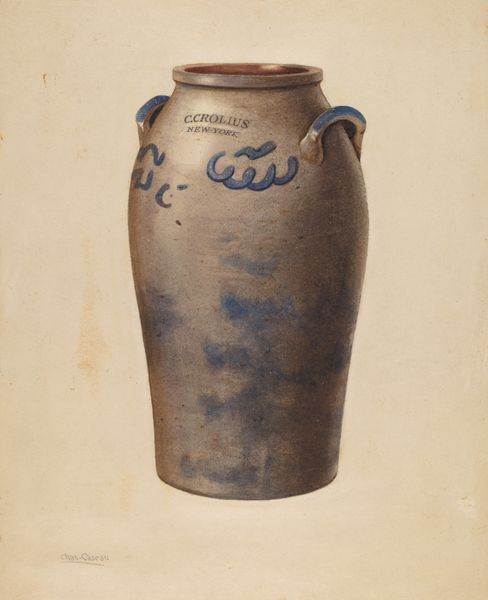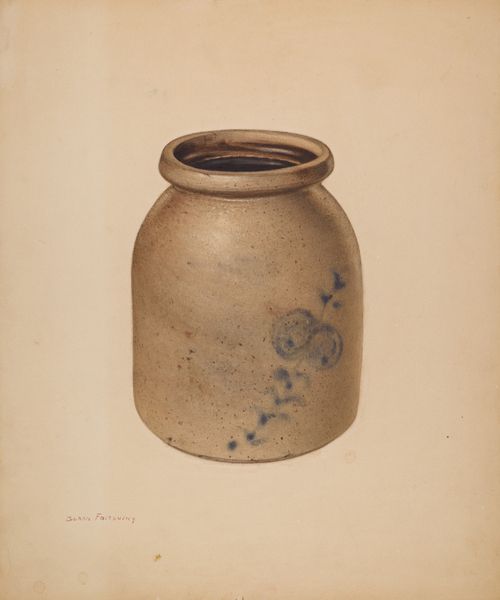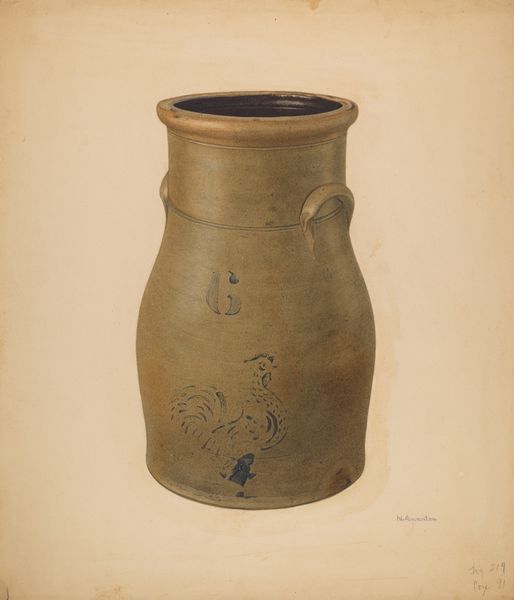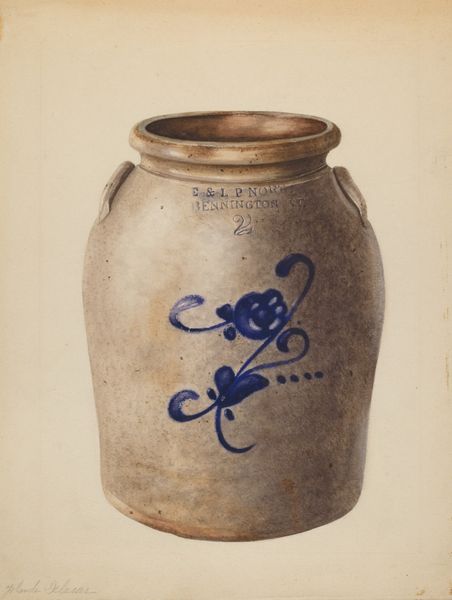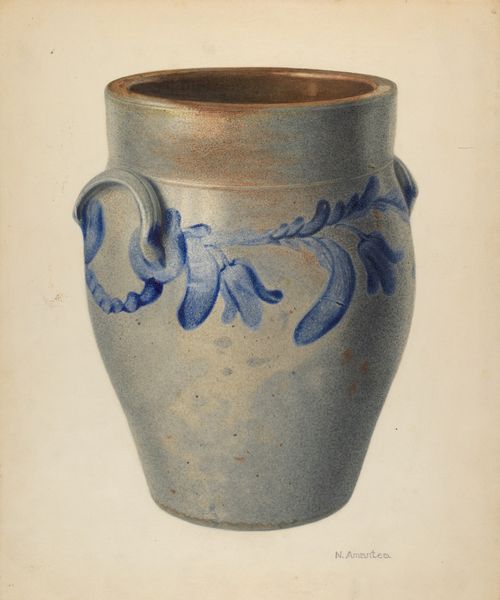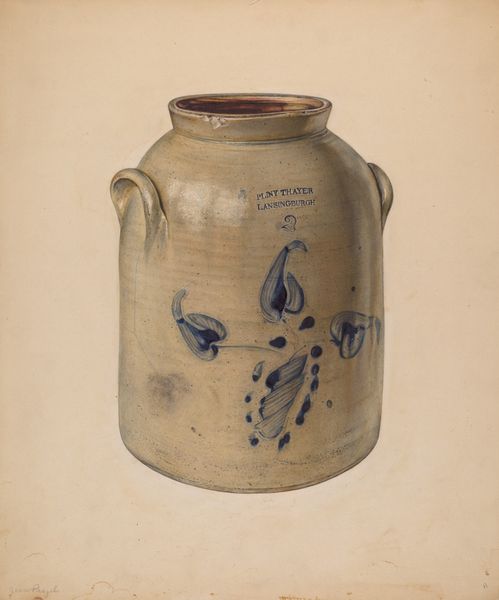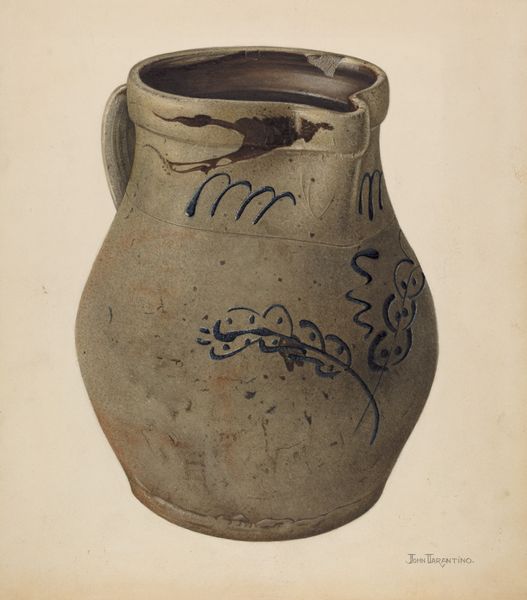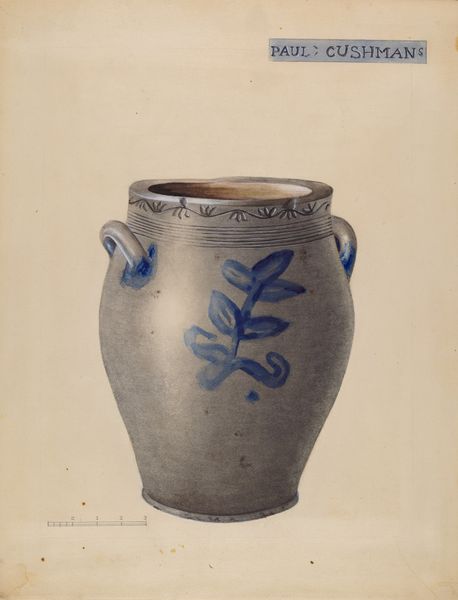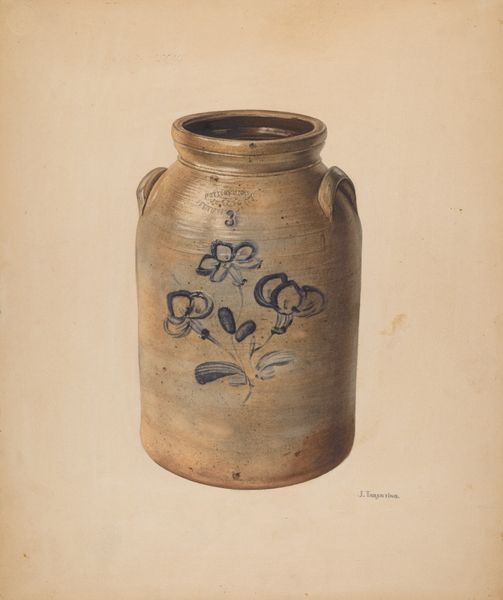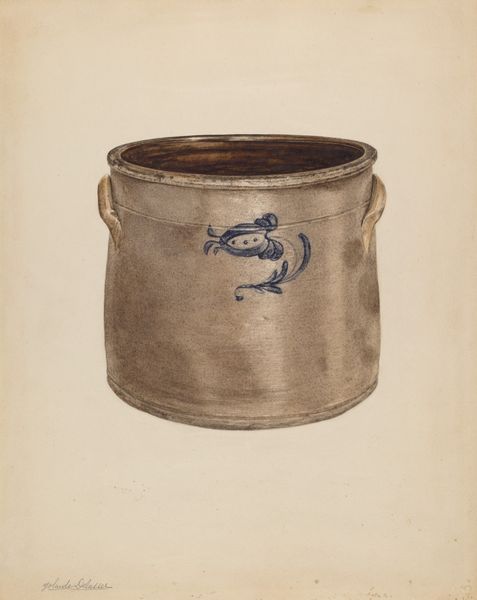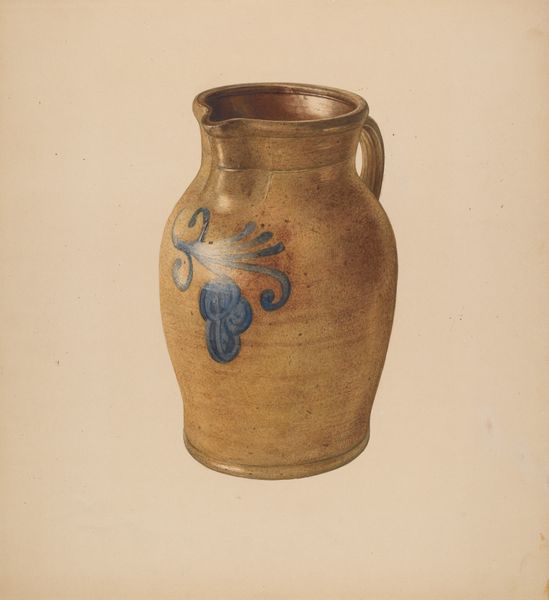
drawing, painting, ceramic, watercolor
#
drawing
#
water colours
#
painting
#
ceramic
#
oil painting
#
watercolor
#
stoneware
#
ceramic
#
watercolour illustration
Dimensions: overall: 41.9 x 37.9 cm (16 1/2 x 14 15/16 in.) Original IAD Object: 11 1/4" High 8 1/4" Dia(top) 8" Dia(base)
Copyright: National Gallery of Art: CC0 1.0
Curator: The image we're looking at is a watercolor and pencil painting entitled "Crock" by John Tarantino, created around 1938. Editor: Immediately, I'm struck by its rustic quality. There’s something so solid and comforting about the rendering of this humble stoneware pot. It evokes a real sense of materiality. Curator: Right, and it’s fascinating to consider why Tarantino chose to depict such an everyday object. What was the artist trying to convey by isolating it like this, almost elevating it? Editor: Perhaps it speaks to the dignity of labor. These crocks were essential for food preservation, part of a whole system of production and domestic work largely done by women. Curator: That’s an excellent point. Looking at this image through the lens of feminist theory, the painting transforms from a still life into a portrait of a specific time and place. The simple design might connect us to histories and intersectional narratives of women in domestic spaces. Editor: And thinking about the production process itself, these crocks would have been made by artisans. We see the ghostly manufacturer's mark up top -- "Stetson & How." Consider the clay, the firing, the salt glazing; all those steps. Tarantino, as a painter, is engaging in a very different form of labor. Curator: Indeed, placing these two methods of creation together offers insight into artistic hierarchy and labor within different spheres, particularly how some are often valued less. I'd be curious about Tarantino's socio-economic background. Did this inform his interest in representing the object itself, or perhaps he found interest in the symbolism behind utility and beauty existing in the same form? Editor: The cobalt blue floral decoration is a beautiful touch, elevating the functionality. Also note the dark inky pit inside; the painting gestures toward utility even as it captures the essence of something more. Curator: Reflecting on this work, I see the artist opening dialogue surrounding access, utility, and visibility in the face of historical context. Editor: And for me, I'm left thinking about the countless unseen hands that went into producing objects that, even now, remain quietly indispensable to our lives.
Comments
No comments
Be the first to comment and join the conversation on the ultimate creative platform.
